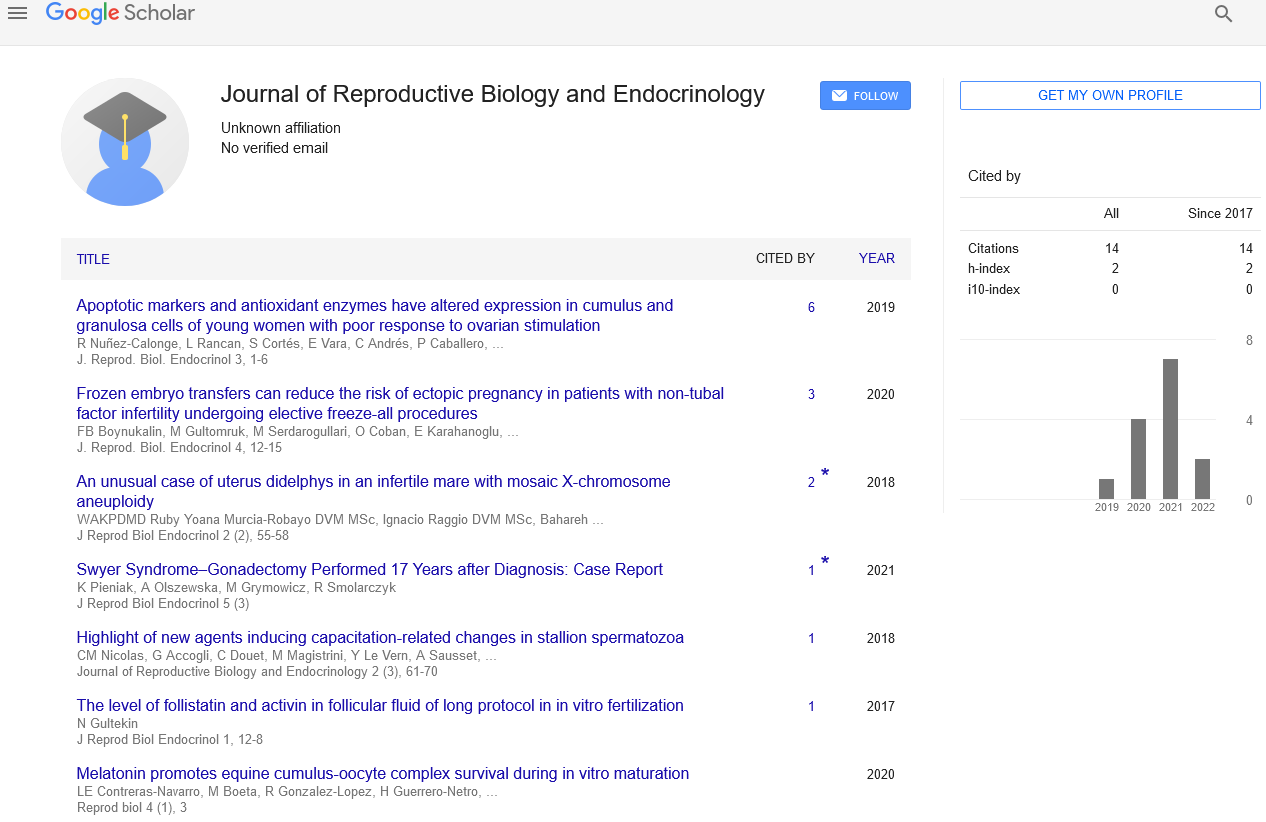Effects of various clinical factors after embryo cryopreservation on pregnancy outcome
Received: 19-Dec-2022, Manuscript No. PULJRBE-22-5931; Editor assigned: 21-Dec-2022, Pre QC No. PULJRBE-22-5931 (PQ); Accepted Date: Jun 26, 2023; Reviewed: 04-Jan-2023 QC No. PULJRBE-22-5931; Revised: 22-Mar-2023, Manuscript No. PULJRBE-22-5931 (R); Published: 30-Jun-2023, DOI: 10.37532/PULJRBE.2023.7(2).1.
Citation: Walker A. Effects of various clinical factors after embryo cryopreservation on pregnancy outcome. J Reprod Biol Endocrinol 2023;7(2):1.
This open-access article is distributed under the terms of the Creative Commons Attribution Non-Commercial License (CC BY-NC) (http://creativecommons.org/licenses/by-nc/4.0/), which permits reuse, distribution and reproduction of the article, provided that the original work is properly cited and the reuse is restricted to noncommercial purposes. For commercial reuse, contact reprints@pulsus.com
Abstract
Oocyte and embryo cryopreservation is a critical stage in the distribution and conservation of animal genetic resources. The ideal protocol has not yet been developed since oocytes and early embryos are extremely sensitive to freezing and cryopreservation, despite recent advancements. The magnitude of the harm, aswell as variations in survival and developing rates, can be very diverse depending on the species,developmental stage, and origin of the oocytes and embryos. All oocytes and embryos sustain significant morphological and functional damage duringcryopreservation (for example, in vitro produced or in vivo derived, micro manipulated or not). Currently, slow freezing and verification are the two processes used to preserve gametes and embryos. High concentrations of penetrating cryoprotectants are commonly present in solutions used for verification or fast cooling of embryos. Embryos can only withstand the penetrating cryoprotectants at these concentrations for brief periods of timebefore suffering harm. This study developed and evaluated cryoprotectant mixtures that contained low penetrating cryoprotectant concentrations and high polymer concentrations. Up to 15 minutes of exposure to 30 wt% solutions of the polymers fecal 70,000 MW or dextran 69,000 MW at room temperature had no detrimental effects on the development of mouse 2 cellembryos. However, even after thorough dialysis against Milli-Q water, our batches of Polyvinylpyrrolidone (PVP) 10,000 and PVP 40,000 were embryo toxic. In patients with infertility, three dimensional ultrasound can be used asa screening approach to find uterine anomalies. After surgical hysteroscopy, we discovered a considerable improvement in the reproductive outcome.
Keywords
Cryopreservation; Ethylene glycol; Fecal; Dextran; Polyvinylpyrrolidone; Mouse; Embryo.
Introduction
Cryopreservation of embryos is one of the more notable advancements made in assisted reproduction. Several benefits of cryopreservation include the ability to inseminate all retrieved mature oocytes without the need to discard any embryos, the ability to reduce the number of embryos transferred to lower the risk of multiple pregnancies, the ability to increase the couple's chance of becoming pregnant without having to undergo another stimulated IVF cycle, and the ability to allow multiple transfers from a single stimulated cycle.
More than 9000 embryos have been cryopreserved in gonadotropin stimulated IVF cycles since the beginning of our embryo cryopreservation programme in 1986. At several developmental phases, namely the pronuclear and intermediate cleaving stages, embryo freezing has been practised. Transfer of thawed embryos has been done during both natural and hormone supplemented estrogen/progesterone cycles.
Description
Here, we discuss our overall results of embryo cryopreservation/thawing and evaluate how clinical factors including ovarian stimulation regimens,freezing techniques, oocyte/embryo micromanipulation techniques, and transfer protocols used impacted the results.
Since embryo cryopreservation has been practised for a long time, there is enough published data on the results to gauge its effectiveness. By transferring fewer fresh embryos, embryo cryopreservation has increased IVF cycle effectiveness. Similarly, when an embryo transfer is postponed due to a danger of ovarian hyper stimulation, endometrial haemorrhage, and elevated blood progesterone levels on the day of triggering, or any other unforeseen circumstances, cryopreservation of the embryos is an essential tool.
Conclusion
The many social ramifications of cryopreservation are still not fully understood. Future studies should focus on issues including how saved embryos affect couples plans for having children and their psychosocial wellbeing, how couples decide how to dispose of their embryos, how to reduce the number of unclaimed embryos, and the effects of oocyte/ovarian cryopreservation.





